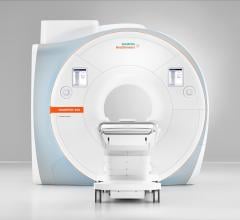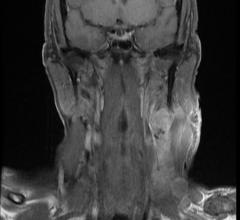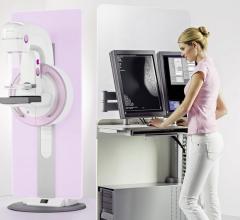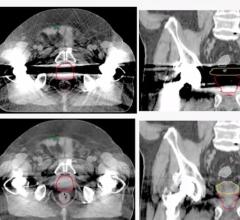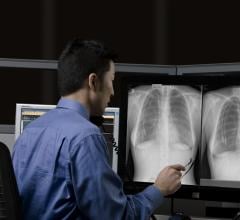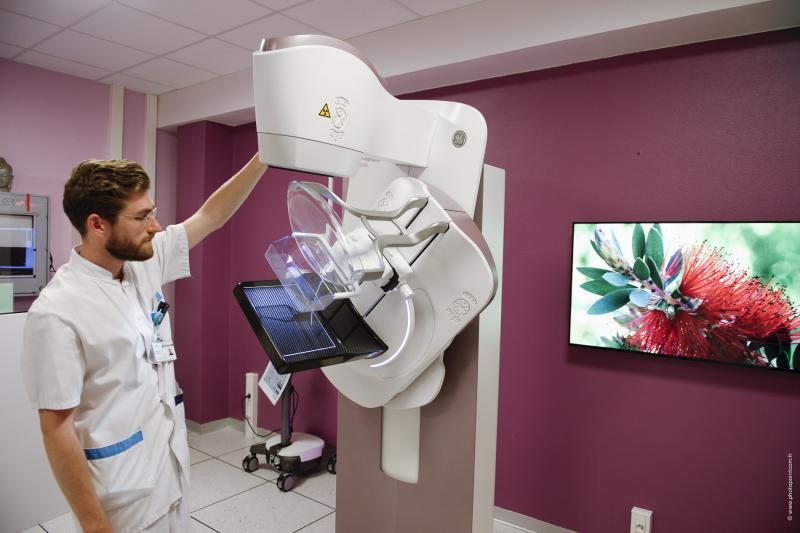October 10, 2018 — Mammosphere launched “Where’s My Mammogram?,” a public service campaign to help women obtain copies ...
DenseBreast-info.org (DB-I) announced the launch of its international expansion for European medical providers. The European expansion of the comprehensive, medically-sourced website for breast density information features an interactive map displaying screening guidelines for selected countries, as well as extensive educational content for healthcare professionals.
The U.S. Food and Drug Administration (FDA) has cleared the Magnetom Sola, a 1.5 Tesla magnetic resonance imaging (MRI) scanner from Siemens Healthineers that brings Siemens’ BioMatrix technology to the 1.5T market. This technology addresses patient anatomical and physiological differences, as well as differences in how users set up and conduct MRI exams, to increase productivity and decrease rescans for improved efficiency and patient satisfaction.
Radiology departments have many different needs and face a wide variety of challenges that can impact their departments ...
A new study by researchers at UT Southwestern Medical Center found no major long-term differences in the effectiveness of radiation therapy versus surgery in treating an increasingly diagnosed head and neck cancer. Given these results, investigators suggest quality-of-life factors should help inform a treatment decision between the two therapies.
CHI Franciscan Health and GE Healthcare have joined forces to implement a NASA-style "Mission Control" command center to effectively and efficiently synchronize all elements of a patient's hospital experience. The artificial intelligence (AI)-powered system will support caregivers to enhance patient safety, orchestrate seamless care delivery and, ultimately, get patients back home sooner.
October 30, 2018 — The American Society for Radiotherapy and Oncology (ASTRO) 2018 annual meeting included 10 top-rated ...
Despite decades of progress in breast imaging, one challenge continues to test even the most skilled radiologists ...
Carri Glide-Hurst, Ph.D., director of translational research, radiation oncology at Henry Ford Health System, describes ...
Highly populated countries have traditionally been slow adopters of non-conventional business models, but a new Frost & Sullivan report says government initiatives to promote early tumor detection are expected to drive the use of X-ray mammography imaging solutions in these countries.
PET/CT can be indispensible as a diagnostic and prognostic tool; in the assessment of patient response to therapy and cancer recurrence; even in the choice of therapy. And the significance of this hybrid imaging modality could grow in future years.
Bayer Radiology’s Barbara Ruhland and Thom Kinst discuss how radiology departments can address the many different ...
October 5, 2018 — Leading oncology experts from around the world recently met to discuss the integration of magnetic ...
The American College of Radiology (ACR) Board of Chancellors (BOC) selected three innovators as 2019 Gold Medalists for their extraordinary service to the College or radiology. Honors will be bestowed during the ACR 2019 Annual Meeting, to be held May 18–22, 2019, in Washington, D.C.
Carri Glide-Hurst, Ph.D., director of translational research, radiation oncology at Henry Ford Health System, describes ...
eHealth Saskatchewan plays a vital role in providing IT services to patients, health care providers, and partners such ...
Body Vision Medical, a medical device company specializing in lung cancer diagnostics, announced the launch of its LungVision platform. The platform will be presented at the CHEST conference, Oct. 7-10 in San Antonio, Texas.
Like low-hanging cyber fruit, hospitals are ripe for plucking. And hackers have already started the harvest. A 12-month ...
When Cullman Regional Medical Center in Alabama decided to switch from 2-D to 3-D mammography, they knew they needed to ...
“Patient-centered care” is a popular term among those in the healthcare industry in the 21st century. It means the patient is part of their own healthcare team helping to make decisions, and they are made as comfortable as possible throughout the process. Vendors are starting to adopt this approach for mammography, arguably the most critical tool for detecting breast cancer.
Carri Glide-Hurst, Ph.D., and Benjamin Movsas, M.D., discuss Henry Ford Hospital's involvement in a national clinical ...
At the 2018 Radiological Society of North America (RSNA) annual meeting, Nov. 26-30 in Chicago, Agfa HealthCare will introduce the MUSICA Workstation, which is designed to support a customer-driven workflow for imaging departments. Developed in close cooperation with technologists, it serves as the “nerve center” of the imaging environment, offering a single, intuitive interface for smooth, efficient digital and computed general radiography (DR and CR), fluoroscopy, mammography and full leg/full spine (FLFS) imaging.
It has been nearly eight years since the world’s first digital breast tomosynthesis (DBT) mammography technology was introduced to market to address the limitations of conventional 2-D imaging, and since then, there have been various technological advancements made to DBT.
Research advancements related to usage of radiation oncology in breast cancer and emphasis on quality care along with support from governments are expected to bring significant transformation in the oncology information management system (OIMS) industry.


 October 10, 2018
October 10, 2018 

